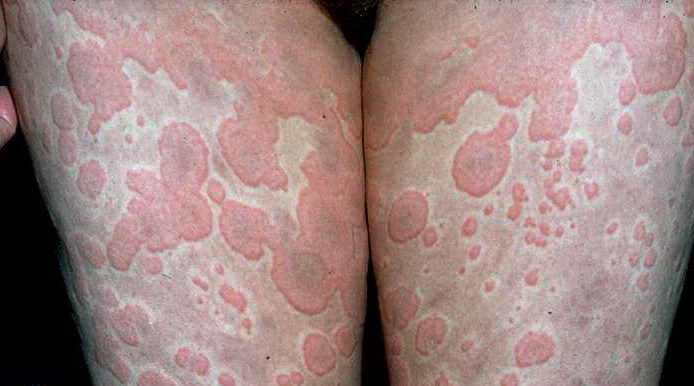Triggers:
The reactions and hormones involved are mast cell activation which release histamine in the body causing symptoms (what causes this activation is still fully unknown), its very similar to an allergic reaction but on the skin causing swelling and hives.
(Antigen is the trigger i.e. medication- see causes)

Schematic diagram illustrating the binding of antigens and cross-linking of immunoglobulin E (IgE)-receptor complexes on the mast cell membrane.
- This event triggers a cascade within the cell that results in the synthesis and release of leukotrienes and prostaglandins, as well as degranulation, which releases histamine, chemical mediators and other factors.
There are different levels of Long term urticaria:
| Level of disease | Score | Wheals and pruritus |
|---|---|---|
| Symptom free | 0 | Itch and hive-free over seven days |
| Well-controlled chronic spontaneous urticaria (CSU) |
1–6 | Typically with a mild itch and no hives or <20 hives over 24 hours |
| Mild CSU | 7–15 | Typically with a mild itch and <20 hives over 24 hours |
| Moderate CSU | 16–27 | Typically with a troublesome itch and ≤50 hives over 24 hours |
| Severe CSU | 28–42 | Typically with an intense itch and >50 hives over 24 hours or large confluent areas of hives |



